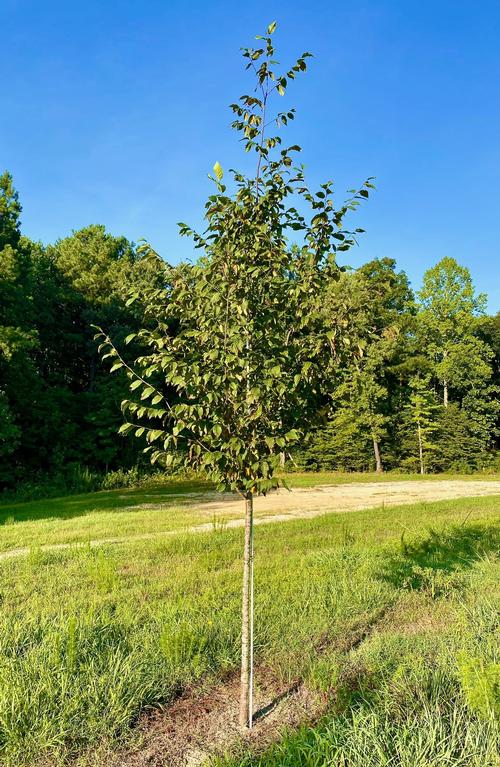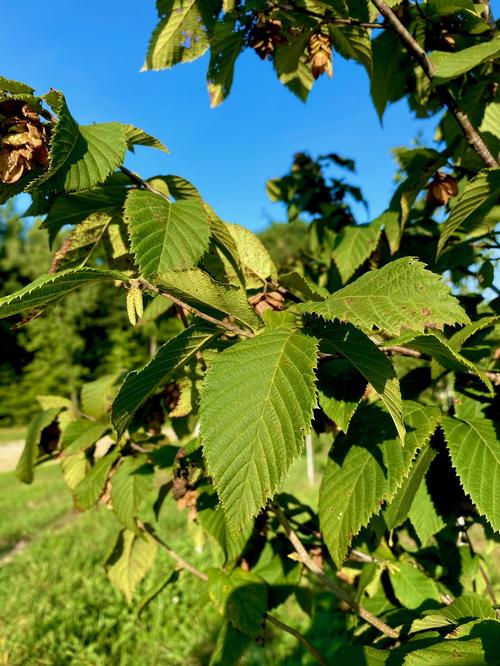



Ostrya virginiana
American Hophornbeam (Ironwood)
This small to medium-sized native tree has a graceful habit with dark green leaves changing to yellow in fall. The leaves look similar to birch tree leaves. The yellowish male catkins are 1/2" - 1" long and hang down in groups of threes. they persist through winter providing multiple many seasons of interest. The fruit is a 1/3" long nutlet enclosed in an inflated hop-like membrane. The common names are derived from the hop-like fruit and the strong, durable wood.
Showy, shaggy bark provides winter interest. Can be planted in a row and pruned to create an interesting hedge.
Flowers produce pollen for pollinators and nutlets are eaten by songbirds, wild turkeys, quail, and small mammals. Witches' brooms that commonly occur on this tree provide a home to many invertebrates eaten by songbirds, especially during winter.
- Native, deciduous tree
- Shaggy bark
- Tolerates some shade
Growing & Maintenance Tips for Ostrya virginiana
Grows best in cool, well-drained, slightly acidic soil in sun or part shade. Can be found in the wild on drier slopes as an understory although some larger specimens are found in deep, well-drained soils in mixed stands of bottomland hardwood.
